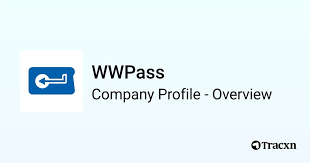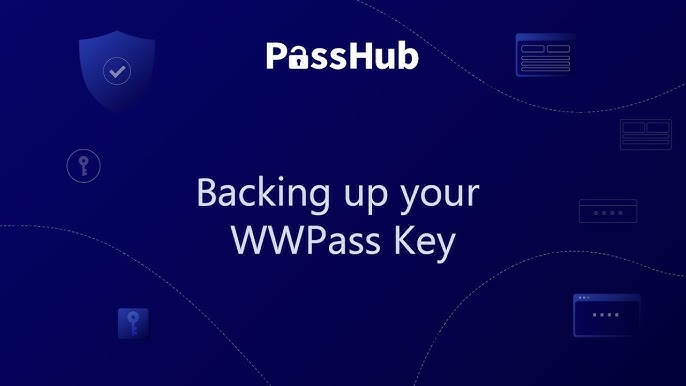
WWPass Key App is a modern authentication tool designed to simplify secure access to digital services while eliminating the need for weak passwords. Built around strong cryptographic principles and a user-centered design, the WWPass Key App acts as a personal key manager that stores credentials, performs secure signing operations, and integrates with enterprise identity systems to provide both convenience and robust protection.
At its core, the application uses asymmetric cryptography to create and manage private keys on behalf of the user. Instead of relying on reusable passwords or shared secrets stored on servers, WWPass Key App generates unique private-public key pairs and keeps the private key securely under the user’s control. Authentication requests are signed locally, and the corresponding public key or token is verified by relying parties. This model reduces the attack surface for credential theft, phishing, and replay attacks, since an attacker cannot authenticate without the private key and the user’s device.
One of the defining strengths of the WWPass Key App is its flexibility. It supports multiple workflows: personal passwordless login for cloud services, two-factor authentication (2FA) where needed, and full integration into enterprise single sign-on (SSO) and federation infrastructures. IT administrators can enforce policies centrally while users enjoy the streamlined sign-in processes. For organizations looking to move away from legacy password management, WWPass offers a migration path that blends security, compliance, and user experience.
The user experience emphasizes simplicity. Installation and onboarding are straightforward: users install the mobile or desktop client, create or import their cryptographic identity, and link the client to their account on supported services. For many services, logging in becomes a matter of selecting an account and approving a cryptographic request on the device, often with biometric confirmation like fingerprint or face recognition. This reduces friction while preserving strong authentication guarantees.
Security features extend beyond key storage. WWPass Key App typically pairs with a distributed backend that never receives private keys, minimizing centralized risk. Transaction and session signing can be scoped and constrained, allowing fine-grained control over what a signature authorizes. Device binding, biometric protection, and optional passphrases create layers of defense in depth. Additionally, WWPass supports secure provisioning and revocation mechanisms so lost or compromised devices can be removed from the trust fabric without exposing other users.
For enterprises, WWPass integrates with popular identity providers and protocols. It can be used alongside SAML, OAuth, and OpenID Connect, enabling passwordless entry into SaaS applications and internal systems. Integration options include SDKs and connectors that allow existing applications to adopt cryptographic authentication with minimal changes. Enterprises benefit from centralized auditing and compliance reporting, which help satisfy regulatory requirements for access control and incident response.
Developers and system architects will appreciate the app’s API and SDK offerings. These tools enable custom workflows, such as signing high-value transactions, authorizing privileged actions, or implementing context-aware authentication that factors device posture and network conditions. Because cryptographic operations occur on the client, sensitive operations remain resistant to server-side compromise. The WWPass model supports both human and machine identities, enabling secure API access and service-to-service authentication in addition to interactive user logins.

WWPass Key App also addresses usability concerns that often plague strong authentication solutions. Offline or intermittent connectivity is considered: cached credentials and challenge-response mechanisms can enable limited offline authorization while still protecting long-term keys. Cross-device use is facilitated through secure key escrow and transfer mechanisms when permitted by policy, giving users the convenience of moving between mobile and desktop environments without sacrificing security.
Adoption scenarios span healthcare, finance, government, education, and general enterprise IT. In regulated industries, the ability to enforce multi-factor cryptographically-backed authentication helps meet stringent identity assurance requirements. Financial institutions can use WWPass to secure transaction signing and customer access, while healthcare providers can ensure that electronic health records are only accessed by verified clinicians. Educational institutions benefit from simplified student and faculty access to learning platforms without burdening help desks with password resets.
Migration planning is an important consideration. Organizations should inventory existing authentication dependencies, evaluate integration points, and pilot WWPass with select user groups. Training and clear communication reduce friction: users need to understand how key recovery, device replacement, and account revocation work. IT teams must plan for lifecycle management of keys and devices and establish incident response playbooks for lost devices or suspected compromise.
Cost and ROI are measured not only in licensing fees but in reduced help-desk overhead, fewer password reset requests, and lower risk of breach. The productivity gains from faster logins and reduced downtime also contribute to business value. When combined with reduced fraud and improved compliance posture, the total cost of ownership often favors modern cryptographic authentication over legacy password-based systems.
From a technical perspective, WWPass Key App can be viewed as part of the broader shift toward decentralizing trust and putting users at the center of their own identity. This aligns with standards-based approaches that emphasize public-key cryptography, zero-knowledge proofs, and minimal disclosure. While WWPass implements its own product-specific flows, the design philosophy is consistent with emerging identity paradigms that aim to reduce bulk data sharing and increase user control.
Operationally, organizations should adopt best practices: enforce strong device security policies, require multi-factor verification for high-risk actions, and maintain audit trails. Regular reviews of user access, periodic key rotation, and automated revocation processes help maintain a healthy security posture. Combining WWPass with endpoint security controls and network segmentation further reduces the risk that stolen credentials could be leveraged for lateral movement.
In conclusion, WWPass Key App represents a practical and secure alternative to passwords. It blends cryptographic rigor with user-friendly design, making it suitable for both individual users and large organizations. By shifting authentication to client-side keys, supporting enterprise integration, and providing clear operational controls for administrators, the app helps organizations modernize identity and access management while improving security, compliance, and user experience. For any organization ready to reduce reliance on passwords and embrace a stronger identity model, WWPass Key App is a solution worth evaluating.
